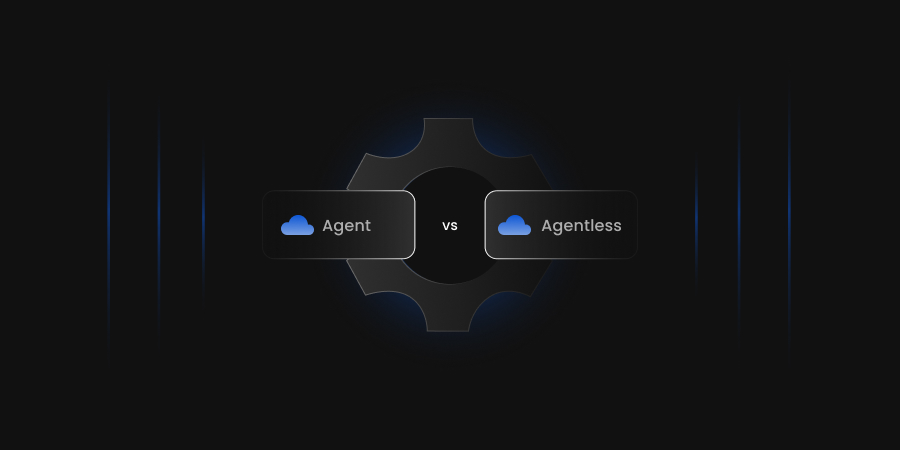Understanding the Certificate Chaos
Digital certificates, issued and managed through Public Key Infrastructure (PKI), play a vital role in securing communication, identity authentication, and data integrity. However, many organizations still treat certificate management as an afterthought. This oversight creates a state of chaos—resulting in expired certificates, service outages, failed audits, or even security breaches.
Let’s take a look at the underlying issues and why fragmented certificate infrastructures are so dangerous.
What Causes Disarray in Certificate Management?
Many interconnected factors contribute to the disorganization of certificate management:
-
Lack of Centralized Visibility
In many organizations, different departments, teams, or individuals manage certificates using their own tools or processes. This decentralization results in:
- Multiple certificates scattered across diverse environments, including Kubernetes clusters, multi-region cloud deployments (AWS, Azure, GCP), and on-premises systems.
- No centralized source of truth to monitor or govern certificate usage.
- Difficulty in identifying all active certificates, especially in dynamic infrastructure with autoscaling or short-lived workloads.
-
Manual Tracking and Renewal
Several organizations still rely on spreadsheets or calendar reminders to track certificate lifecycles. This outdated approach applies not just to web servers, but also to machine identities, APIs, and microservices—where certificates are just as critical. As environments scale, this manual method leads to:
- Human error
- Missed renewals
- Inaccurate records
If even one renewal is missed, it can result in expired certificates, service outages, broken application communication, and a loss of digital trust.
-
Shadow IT and Unapproved Certificates
Sometimes, developers or engineers deploy certificates without central visibility or approval, known as “shadow certificates.” These certificates:
- Are not recorded in official inventories.
- Often have weak or non-compliant configurations.
- May use deprecated cryptographic algorithms or fall short of organizational security standards.
- Can be forgotten over time, creating long-term vulnerabilities.
Without centralized oversight, these rogue certificates silently increase the organization's attack surface and compliance risk.
-
Multiple Certificate Authorities (CAs)
When different internal and external CAs are used for various use cases—SSL/TLS, email encryption, code signing, etc.—it complicates certificate management. Each CA comes with:
- Different issuance rules.
- Different renewal procedures.
- Different integration requirements.
Additionally, some systems, like Java keystores or Kubernetes secrets, have compatibility limitations with certain CAs or certificate formats. This increases the complexity of deployment, troubleshooting, and standardization across environments.
-
Shorter Validity Periods
As the industry moves toward shorter SSL/TLS certificate validity, the renewal cycle has become more frequent and harder to manage manually. This shift is largely driven by CA/Browser Forum mandates aimed at improving security through more frequent key rotation and reducing the window of exposure from compromised certificates.
More frequent renewals = higher administrative overhead and greater risk of downtime if not automated.
The Hidden Risks of Fragmented Certificate Infrastructure
Fragmented certificate management not only slows things down but also actively introduces risk. Here’s how:
-
Downtime and Business Disruption
An unnoticed expiration of a critical certificate can shut down the system it secures, leading to:
- Inaccessible websites or services
- Disrupted APIs, mobile applications, or backend microservices
- Lost revenue and erosion of customer trust
- Emergency firefighting by IT and DevOps teams
These incidents often escalate quickly, affecting user experience, internal workflows, and overall business continuity.
-
Compliance Violations
Regulations like PCI-DSS, HIPAA, GDPR, and others mandate secure data transmission. An expired or misconfigured certificate could mean:
- Encryption fails.
- Data is exposed or intercepted.
- Automated security and compliance scans fail, flagging systems as non-compliant.
- Fines, failed audits, or reputational damage.
Even a single expired certificate can jeopardize an organization's ability to demonstrate continuous compliance.
-
Increased Attack Surface
Unmanaged or poorly configured certificates—such as those using weak encryption algorithms, improper key lengths, or lax validation—can lead to:
- Man-in-the-middle (MITM) attacks
- Phishing via rogue or spoofed certificates
- Exploitation of trust chains in the certificate hierarchy
High-profile incidents like the DigiNotar breach, where attackers issued fraudulent certificates for major domains, or SSL stripping attacks that downgrade HTTPS connections to HTTP, demonstrate how mismanaged certificates can be leveraged to compromise users and infrastructure.
-
Incident Response Delays
During a security breach, fragmented certificate systems slow down response time because:
- It's unclear which certificates are affected.
- Teams don't know who owns what.
- Revocation is slow and inconsistent.
-
Operational Overhead and Inefficiency
Manually managing certificates consumes a lot of time for IT and security teams, which could be used for strategic initiatives. The inefficiency stems from:
- Repetitive tasks
- Lack of automation
- Firefighting mode during outages
Additionally, unmanaged certificates can generate excessive or misleading alerts, placing strain on Security Information and Event Management (SIEM) systems and complicating incident management workflows. This can lead to alert fatigue, delayed responses, and missed threats.
The Governance Gap in Certificate Management
As enterprises expand and transition to hybrid and multi-cloud infrastructures, managing digital certificates becomes increasingly difficult. This often results in a governance gap—a disconnect between certificate best practices and what’s actually implemented across the organization. Specifically, this gap is marked by a lack of clearly mapped ownership, limited auditability, and inconsistent policy enforcement. The consequences are significant: expired certificates, security vulnerabilities, compliance failures, and operational inefficiencies.
Lack of Visibility & Policy Enforcement
For many organizations, it’s a challenge to maintain a real-time, unified view of all certificates across their infrastructure. Certificates exist across:
- Web servers
- Load balancers
- Application containers
- Internal tools and services
However, without centralized discovery and monitoring tools, certificates remain hidden and later forgotten until they expire or cause a disruption. Even with the existence of certificate policies—like specifying minimum key lengths, allowed CAs, or certificate durations—they are rarely enforced consistently. This is often the result of a lack of automation or integration with policy engines.
Common consequences include:
- Expired certificates leading to service outages
- Use of unauthorized or self-signed certificates
- Non-compliance with regulatory standards
- Inability to produce accurate audit trails
Decentralized Certificate Ownership
In most enterprises, certificates are handled by multiple teams in isolation:
- Network teams deploy certificates on routers, firewalls, or proxies
- DevOps teams generate certificates for pipelines and internal services
- Application teams request and manage certs for APIs or backend systems
- Security teams define governance policies, but often lack operational control
This fragmented ownership leads to the following:
- Confusion when it's unclear who is responsible for issuing, renewing, or revoking a certificate.
- Redundant or siloed tools are being used across teams.
- The absence of consistent practices or shared visibility.
- During incidents or certificate-related failures, responses are delayed.
Navigating Evolving Compliance Frameworks
With growing cyber threats and expanding digital ecosystems, compliance frameworks are shifting from basic checklists to models focused on continuous governance, visibility, and risk management, especially when it comes to cryptographic assets like digital certificates. This evolution is being driven in part by the rise in ransomware campaigns, data breaches, and nation-state cyberattacks, which have exposed the critical role of certificate and key management in maintaining trust, preventing unauthorized access, and ensuring system resilience.
The Rise of Governance in NIST CSF 2.0 and Beyond
The NIST Cybersecurity Framework (CSF) has long served as a cornerstone for security best practices across both public and private sectors. With the release of NIST CSF 2.0, governance can no longer be overlooked, as now it’s a primary concern.
Key Changes in NIST CSF 2.0:
- Governance has now emerged as a core function alongside identifying, protecting, detecting, responding, and recovering.
- Organizations are expected to establish formal policies, define roles and responsibilities, and implement continuous oversight of cybersecurity functions.
- There is a growing focus on managing digital infrastructure, including cryptographic assets like certificates, keys, and identity systems.
How Regulatory Expectations Are Shifting
Around the world, data protection and cybersecurity regulations are becoming more prescriptive and enforced. Earlier certificates were viewed as low-priority IT assets; now, they are recognized as important components of secure digital infrastructure.
Notable Shifts in Regulatory Landscape:
-
Shorter Certificate Validity Windows
- Industry mandates (e.g., CA/Browser Forum) have reduced certificate lifespans, increasing the frequency of renewals.
- Regulations now demand automated renewal and expiration monitoring from organizations.
-
Focus on Encryption and Cryptographic Controls: Regulations like HIPAA, GDPR, and PCI-DSS require encryption of data in transit and at rest, with proven management of cryptographic keys and certificates.
-
Audit Readiness and Traceability
- Compliance frameworks demand proper controls as well as evidence of control.
- This includes maintaining detailed logs of certificate issuance, usage, and revocation, as well as ensuring that roles and permissions are clearly defined and documented.
-
Zero Trust and Identity-Centric Security
- Compliance is moving towards zero trust models, where identity and trust are continuously verified.
- Digital certificates play a crucial role in device and service authentication, requiring centralized policy enforcement and lifecycle control.
-
Sector-Specific Expectations
- Financial, healthcare, defense, and critical infrastructure sectors require increasingly strict certificate management.
- Frameworks like FFIEC, NERC CIP, and FedRAMP call out certificate controls explicitly in their compliance checklists.
Centralizing Control with Internal PKI and CLM
As digital ecosystems grow more complex, manually managing certificates is no longer effective or secure. That’s where a centralized Certificate Lifecycle Management (CLM) system, integrated with an Internal PKI, becomes essential.
A modern CLM platform should also support secure API-driven integrations across your DevOps and security toolchains, and offer crypto agility—including compatibility with RSA, ECC, and emerging post-quantum cryptographic (PQC) algorithms—to future-proof your infrastructure against evolving threats.
Benefits of a Unified Certificate Management Approach
When organizations centralize certificate control through an internal PKI and CLM platform, they gain:
-
Full Visibility Across the Environment
- Ability to track all certificates—regardless of issuing CA or deployment location—in one place.
- No more shadow certificates or surprise expirations.
-
Automated Lifecycle Operations
- Automatically issue, renew, revoke, and replace certificates based on predefined policies.
- Reduces human errors and ensures timely renewals.
-
Stronger Governance and Policy Enforcement
- Apply organization-wide policies on key lengths, allowed CAs, certificate durations, naming conventions, and more.
- Applies security standards uniformly across teams and systems.
-
Faster Incident Response
- Quickly locate and revoke compromised or non-compliant certificates.
- Minimizes the impact of breaches or misconfigurations.
-
Audit-Readiness and Reporting
- Keep audit-ready records and generate reports to show compliance with standards like NIST, PCI-DSS, HIPAA, and ISO 27001.
- Streamlines audit prep and supports continuous compliance.
-
Reduced Operational Overhead
- By eliminating manual tracking and fragmented ownership, IT and security teams can pay attention to more important tasks.
- Free up hours of routine maintenance.
Key Features of a Compliance-Ready CLM System
To ensure certificates are not just managed—but managed securely and compliantly—a modern CLM system should offer:
-
Certificate Discovery & Inventory
- Continuous, agentless scanning across cloud environments, containers (including Kubernetes-based platforms like AKS and EKS), on-prem infrastructure, and IoT
- Centralized inventory to manage all digital certificates—supporting both internal and external CAs
-
Automated Lifecycle Management
- One-click issuance, renewal, and revocation.
- Auto-enrollment for end users, servers, and applications.
- Alerts for expiration and renewal workflows.
- Native support for certificate automation protocols such as SCEP (Simple Certificate Enrollment Protocol), ACME (Automatic Certificate Management Environment), and EST (Enrollment over Secure Transport) for seamless, standards-based integration across devices and services
-
Policy Definition & Enforcement
- Configurable rules for key length, validity period, naming conventions, and allowed CAs.
- Restriction of unauthorized certificate issuances
- Built-in role-based access control (RBAC)
- Policy exception handling and approval workflows to ensure deviations are controlled, documented, and auditable without compromising governance
-
Audit Logging & Compliance Reporting
- Logs of every certificate event that are tamper-proof and immutable, supporting mechanisms such as WORM (Write Once, Read Many) storage or blockchain-backed audit trails.
- Support for syslog export to integrate seamlessly with SIEM platforms and centralized logging solutions.
- Customizable compliance dashboards and exportable audit reports to meet standards like PCI-DSS, HIPAA, NIST, and ISO 27001.
-
Integration with Security & IT Ecosystems
Support for integration with:
- Identity and Access Management (IAM)
- SIEM, ITSM, GRC, and DevOps tools
- Microsoft AD CS, HashiCorp Vault, AWS, Azure, etc.
- Service meshes such as Istio and Linkerd enable automated certificate management for secure service-to-service communication.
- Container orchestrators like Kubernetes, with native support for secrets management and dynamic certificate injection.
-
Private CA and Internal PKI Support
- Native support for managing internal PKI and private CAs.
- Issuance of internal-use certificates (e.g., device authentication, email signing, internal services)
- Integration with Hardware Security Modules (HSMs) to secure root and intermediate CA private keys, ensuring strong cryptographic protection and compliance with standards like FIPS 140-2 and Common Criteria
How Encryption Consulting Can Help
At Encryption Consulting, we understand that managing digital certificates is no longer just an operational task—it’s a critical part of your organization’s cybersecurity and compliance strategy. That’s why we built CertSecure Manager, our enterprise-grade CLM solution, to help you eliminate certificate chaos and take back control.
Here’s how CertSecure Manager can help your organization meet evolving compliance demands while reducing risk and operational overhead:
- Centralized Visibility & Inventory: No more spreadsheets or blind spots. CertSecure Manager provides complete visibility into every certificate across cloud, on-prem, and hybrid environments. With built-in discovery tools, you'll always know what certificates you have, where they're deployed, and when they expire.
- Automated Lifecycle Management: Manual renewal reminders are a thing of the past. Our CLM automates issuance, renewal, revocation, and replacement of certificates, ensuring that no cert ever goes unnoticed or expires unexpectedly.
- Enforced Governance & Policy Control: CertSecure Manager helps enforce enterprise-wide policies around key length, certificate validity, approved CAs, and naming conventions. Role-based access control (RBAC) ensures that only authorized teams can issue or manage certificates.
- Real-Time Alerts & Expiration Prevention: Never be caught off guard. Get proactive alerts on expiring or non-compliant certificates with customizable notification workflows—so you can act before disruptions happen.
- Compliance-Ready Audit Logging: From HIPAA and PCI-DSS to NIST CSF and ISO 27001, CertSecure Manager supports your audit readiness with tamper-proof logs, detailed activity trails, and compliance dashboards that make reporting fast and accurate.
- Seamless Integrations: CertSecure Manager integrates effortlessly with your existing infrastructure—whether it's Active Directory, HashiCorp Vault, AWS, Azure, DevOps pipelines, or SIEM tools—so you don't have to overhaul your ecosystem.
With CertSecure Manager, you gain more than a tool—you gain confidence. Confidence that your certificates are secure, your compliance boxes are checked, and your teams aren’t wasting time chasing expiring certs.
Learn more about CertSecure Manager or schedule a demo with our team today.
Conclusion
Managing digital certificates doesn’t have to be chaotic. With rising compliance demands and growing digital complexity, a centralized approach is essential. By leveraging a robust CLM solution like CertSecure Manager, organizations can eliminate outages, streamline operations, and stay audit-ready, transforming certificate management from a vulnerability into a strategic advantage.




